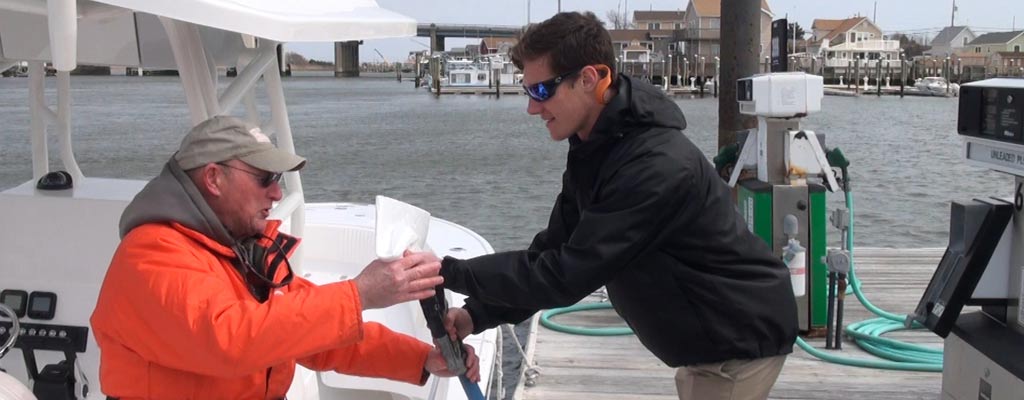Fueling Tips
Whether you refuel at a roadside gas station, on the water at a gas dock, or use portable containers there are some general tips that apply to all fueling situations.
Safety First!
- No matter where you are refueling, always clear the area of anyone not directly involved with fueling boat.
- Put out all smoking materials and secure your boat to the dock.
- Turn off engine(s), electronics, and extinguish all open flames.
- Keep the nozzle in contact with the edge of the fill to prevent build up of static electricity to prevent sparking.
- Don"t top off your tank. Know how much fuel your tank holds and fill it to about 90%. Fuel expands as temperatures rise.
- Clean up fuel spills immediately with an oil-only absorbent pad. Wipe down the bilge or any interior parts that may have come in contact with fuel.
- Treat your fueling operations with care. Never use hands-free clips, and avoid any distractions while fueling.
Here are some additional tips for fueling based on where and what you are fueling:
Fueling at the gas dock
Watch this video for more on fueling at the fuel dock.
Fueling at the gas station
- Be aware if your gas station sells gasoline with ethanol. Special precautions should be taken when using ethanol blended gasoline.
- Level your boat; fuel goes in more easily and is less likely to spill if your boat is level. Adjust your bunks/rollers or lower your trailer hitch if necessary. This can be challenging with the boat on the trailer so take note of any needed changes and adjust the trailer after your next launch.
- Position yourself so you can see the deckfill and hold the nozzle comfortably. This may mean getting into the boat or using a step stool. If you have to strain to hold the nozzle and see the deckfill, you are more likely to have a spill.

Fueling portable containers
- Always refill your portable fuel containers on the pavement or dock to ensure a good ground. While the bed of your truck or the deck of your boat may seem stable, static electricity can build up and cause a spark.
- On the dock, put an absorbent pad under the container.
- Consider using a funnel. A filtered funnel will help prevent contaminants from entering the fuel tank.
- Ensure the nozzle stays in contact with the tank opening.
- Always store portable fuel tanks out of direct sunlight and keep in a cool, dry place to minimize condensation.
- Fueling your boat with a portable container can take time, make sure your container is comfortable to carry, hold and balance.
- Portable containers and Jerry Jugs can be spill prone, go slowly, pour deliberately and watch you container (especially the nozzle mechanism) for signs of wear.
- To learn more about fueling boats from Portable Containers or Jerry Jugs visit: www.boatus.org/findings/43.

Fueling PWCs
- PWCs sit close to the water so it doesn"t take much for a small spill around the nozzle to end up in the water. You"ll have less time to catch drips than you would with a larger boat.
- Select a fuel dock that has wave protection or better yet PWC dock or platform to help stabilize your PWC.
- Avoid potential distractions.
- Be certain your PWC is tied up securely before refilling.
- Use an oil-only absorbent pad around the deck-fill or nozzle to catch any stray drops of fuel.

